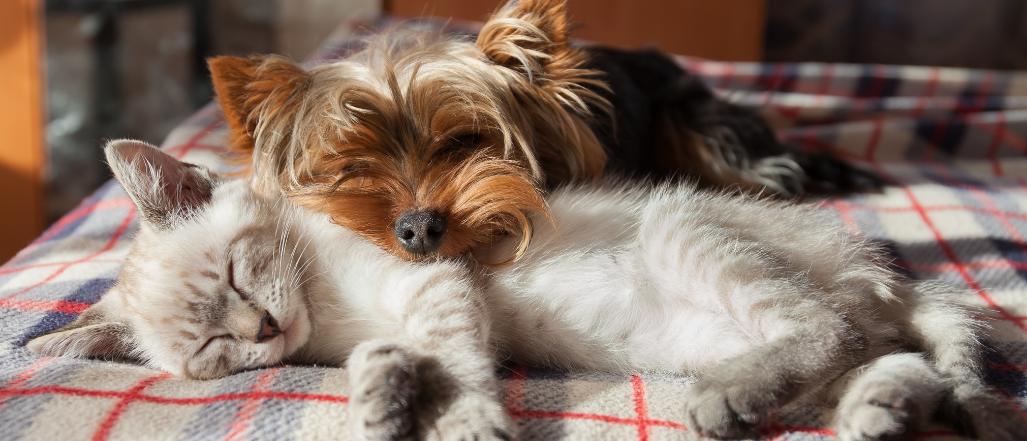Summary
Advances in veterinary care mean that our pets are living longer, healthier lives. But as care has improved, costs have increased—and pet insurance can help.
- Learn about the different types of pet insurance, and what each policy type covers.
- Pets can get sick or injured just like people. Pet insurance can cover the costs of their medical care.
According to an annual survey by the American Pet Products Association, nearly 70% of U.S. households have at least one pet. Dogs and cats are at the top of the list, but fish, birds, small animals, and reptiles also make appearances.
As any pet owner can tell you, having a pet costs money. Food, all of the necessary gear, and routine veterinary care can add up quickly.
On top of that, emergency care or treatment for illness can be very costly. This is why more and more pet owners are turning to pet insurance policies. The North American Pet Health Insurance Association estimates the average annual growth rate of pet insurance policies in the U.S. to be 23.4% over the past five years.
Before we dive in, here’s a fun trivia fact: The first pet insurance policy issued in the U.S. was in 1982, for collie and TV star “Lassie.”
How Does Pet Insurance Work?
Pet insurance serves as a health insurance policy for your pet, but for most pet insurance plans, it will function a bit differently than your human health insurance policy.
Pet insurance typically is designed as reimbursement-based insurance. This means that when you go to the vet’s office, you will pay the bill in full for the services you receive at the time of the appointment. After paying the bill, send it to your pet insurance company. They will give you money back for expenses that are included in your policy.

When Should I Get a Pet Insurance Policy For My Dog or Cat?
The best time to apply for a pet insurance policy is as soon as you bring your pet home.
Most pet insurance policies have a waiting period between the time you apply for pet insurance and when the policy becomes effective. Waiting periods can differ depending on the policy type — and even on the coverage type within a policy.
If you buy pet insurance, you may have to wait before coverage starts. When you purchase pet insurance, there may be a waiting period before your coverage begins. The waiting period for accidents typically ranges from 2 to 14 days.
For illnesses, the waiting period is usually between 14 and 30 days. The waiting period for preventative care can vary from a few days to no waiting period at all.
The cost of your pet insurance depends on where you live and the type of pet you have. Just like other types of insurance, these factors play a role in determining the price. Your location and your pet’s breed are important factors that influence the cost of pet insurance. Purebred pets may cost more to insure due to their higher risk of genetic health issues compared to mixed-breed animals.
As with any insurance policy, it’s important to know and understand your policy’s fine print.
What Types of Pet Insurance Are There?
Broadly speaking, there are three main types of pet insurance available. Each type of insurance has pros and cons, and understanding what pet insurance covers will help you to determine which product meets your needs.
Accident and illness
Accident and illness coverage also sometimes comes with wellness coverage included. It is more comprehensive coverage that includes treatment for accidental injury, sickness and diseases.
Accident only
Accident-only coverage will help you pay veterinary bills associated with injuries sustained from accidents. Such coverage will not include treatment for sickness or disease.
Wellness
Wellness coverage is sometimes called preventative-care coverage. This type of pet insurance offsets the expense of regular veterinary costs associated with being a pet owner. It covers routine expenses such as vaccinations, lab work and dental care.
Does Pet Insurance Cover Pre-Existing Conditions?
Most pet insurance policies do not cover preexisting conditions. If you are considering adding a pet to your family, it’s wise to purchase pet insurance while your pet is young and healthy.
If you adopt an older dog or cat, you can still get pet insurance. It’s better to do it as soon as you can. Some pet insurance policies will not extend coverage to animals over a certain age.
When you apply for pet insurance, the company might request your pet’s medical records. They may also ask for a check-up before providing coverage. This medical exam may require additional tests and exams beyond a typical checkup. You will be responsible for covering the costs.
Find out from the insurer what tests and exams will be necessary, and then ask your vet for an estimate. Insurers often ask for general exams, lab work, orthopedic exams, and X-rays before approving coverage.
If you have any health problems found, they will be considered preexisting conditions. Your insurance policy will probably not cover these conditions. Depending on the severity of any illnesses uncovered, your pet may even be denied coverage.
Who Needs Pet Insurance?
If you have a pet, you’re probably a good candidate for pet insurance. That said, there are some guidelines that can help you to determine if pet insurance is right for you, and if so which type of insurance might work best. Here are some of the things to consider:
The Type of Pet You Have
Generally speaking, the larger the animal, the bigger the vet bill for routine care. Horses require different care than kittens, which will be reflected in your veterinary bill. Most pet insurance policies issued in the U.S. cover dogs and cats, because the majority of American households with pets have one or both.
Your Pet’s Breed
Certain dog breeds are more prone to health issues like hip dysplasia, breathing problems, and genetic diseases like degenerative myelopathy. It’s best to get insurance for your pet when they are young and healthy to avoid costly treatment for diseases.
Because some of these conditions are so prevalent in some breeds, your pet insurance might even exclude treatment for these from your coverage. Ask plenty of questions, and make sure you know what is covered and what is excluded before you purchase a policy.
Your Budget
Having a pet is a big responsibility, and it can be expensive. Before you get a pet, spend some time examining your budget. Gather whatever information you can on costs associated with owning a pet, from food to veterinary care.
Puppies and kittens are curious and can get into things, which can lead to emergency treatment. A chewed-up sock can cause a bowel obstruction, and many common household plants are toxic to dogs and cats. Here are some questions to consider:
- Could you afford to pay for emergency treatment out of pocket?
- How much debt are you able to shoulder if an expensive surgery or treatment is needed to save the life of your pet?
Honestly assessing how much you are able to afford to pay if an emergency arises may help you to determine if pet insurance is right for you, and which coverage type will best meet your needs.
Is Pet Insurance Worth It?
Lots of Americans see their pets as family members. Better food and healthcare have helped dogs and cats live longer, healthier lives. Because medical care can be costly, pet owners are increasingly turning to pet insurance to help cover expenses.
As with humans, accidents and illnesses happen to pets. Medical and surgical care is available for your pet, but it can be very expensive — and those costs only increase as your pet ages.
Senior pet wellness exams happen twice a year. Pet medications and special diets might be necessary later in life. It can all add up very quickly. As average veterinary costs rise, so has the interest in pet insurance policies.
The good news, however, is that pet insurance costs can be quite affordable — especially when you consider the fact that it is coverage you are very likely to use at some point.

How can I get a quote for pet insurance?
Pets add richness to our lives, from loving companionship to recreation and exercise. They are dependent on their humans to provide for their needs including food, exercise and proper health care.
Even routine wellness care can be costly, and if your pet has an emergency, medical intervention could cost thousands of dollars. Pet insurance could offer peace of mind that you could afford to get your pets the potentially life-saving treatment they need.
Pet insurance coverage can vary significantly, so if you are thinking of adding a pet to your family, start researching pet insurance before you bring your new family member home. Talk to your agent or connect with an Expert Agent to get a free quote on pet insurance today!
Disclaimer:
All information provided in this publication is for informational and educational purposes only, and in no way is any of the content contained herein to be construed as financial, investment, or legal advice or instruction.
Rate Insurance does not guarantee the quality, accuracy, completeness or timelines of the information in this publication. While efforts are made to verify the information provided, the information should not be assumed to be error free. Some information in the publication may have been provided by third parties and has not necessarily been verified by Rate Insurance. Rate Insurance does not assume any liability for the information contained herein, be it direct, indirect, consequential, special, or exemplary, or other damages whatsoever and howsoever caused, arising out of or in connection with the use of this publication or in reliance on the information, including any personal or pecuniary loss, whether the action is in contract, tort (including negligence) or other tortious action.

